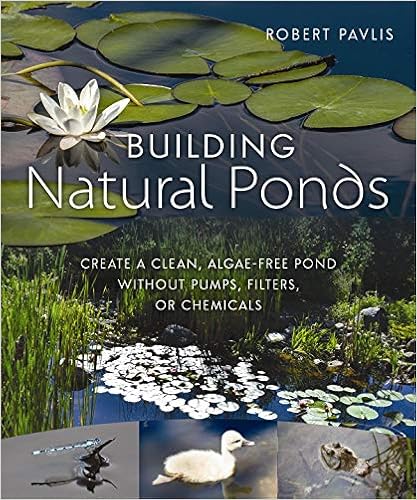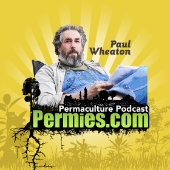 Summary
Summary
Do you dream of a pond you can call your own but but the cost, hassle, and skills needed for all the filters and water chemistry seem overwhelming?
Building Natural Ponds shows us that we don't have to have a complicated system of pumps and filters and constant monitoring and tweaking of water chemistry just to have a beautiful natural pond. In the book you'll see how with a little planning and a lot of help from nature (think plants) you can have a stunning pond that doesn't need constant monitoring and adjusting or regular changes of a filter system.
From the author's website: "Typical backyard ponds are a complicated mess of pipes, pumps, filters, and nasty chemicals designed to adjust pH and keep algae at bay. Hardly the bucolic, natural ecosystem beloved by dragonflies, frogs, and songbirds.
The antidote is a natural pond, free of hassle, cost, and complexity and designed as a fully functional ecosystem, ideal for biodiversity, swimming, irrigation, and quiet contemplation.
Building Natural Ponds is the first step-by-step guide to designing and building natural ponds that use no pumps, filters, chemicals, or electricity and mimic native ponds in both aesthetics and functionality. Highly illustrated with how-to drawings and photographs, coverage include
- Understanding pond ecosystems and natural algae control
- Planning, design, siting, and pond aesthetics
- Step-by-step guidance for construction, plants and fish, and maintenance and trouble shooting
- Scaling up to large ponds, pools, bogs, and rain gardens.
Whether you’re a backyard gardener looking to add a small serene natural water feature or a homesteader with visions of a large pond for fish, swimming, and irrigation,
Building Natural Ponds is the complete guide to building ponds in tune with nature, where plants, insects, and amphibians thrive in blissful serenity.
About The Author
Robert Pavlis, a Master Gardener with over 40 years of gardening experience, is owner and developer of Aspen Grove Gardens, a six-acre botanical garden featuring over 2,500 varieties of plants. A well-respected speaker and teacher, Robert has published articles in Mother Earth News, Ontario Gardening magazine, the widely read blog GardenMyths.com, which explodes common gardening myths and gardening information site GardenFundamentals.com.
source: Building Natural Ponds Website
Where To Buy:
Amazon.com
amazon.ca
amazon.co.uk
amazon.com.au
New Society Publishers
Related Videos
Related Forums
Ponds
Earthworks
Related Websites
Author's websites
Building Natural Ponds - author's book website
Articles by Robert Pavlis
Author's blog
Author's YouTube channel
 1
1






 3
3




 4
4
















